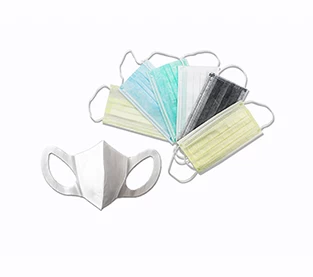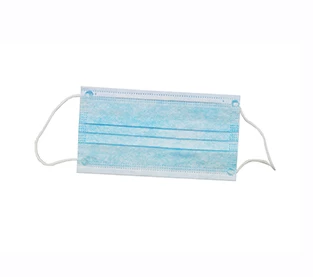Product: ES Material Fiber Nonwoven Fabric For Packaging
Raw Material: PP+PE
Nonwoven Technology: thermal bonded
Dotted Design: dot or plain
Gram: 25 gsm - 30 gsm
Color: White
Specification: custom
Sample: Can be provided without charge, freight to be collect
Applications:
Medical(20-60gsm): face masks,diapers,bed sheets,curtains,pillow covers,sanitary,etc
Packaging(25-30gsm): tea bag, coffee bag/filter paper, dust-proof covers.etc
Product: ES Thermal Bonded Non Woven Fabric For Tea Bag
Raw Material: PP+PE
Nonwoven Technology: thermal bonded
Dotted Design: dot or plain
Gram: 25 gsm - 30 gsm
Color: White
Specification: custom
Sample: Can be provided without charge, freight to be collect
Applications:
Medical(20-60gsm): face masks,diapers,bed sheets,curtains,pillow covers,sanitary,etc
Packaging(25-30gsm): tea bag, coffee bag/filter paper, dust-proof covers.etc
Product: Composite Non Woven Paper Desiccant Packaging Material
MOQ: 1000 kg
Material: Composite Non Woven Paper
Specification: Custom sizes.
Design: Welcome custom logo and design. Welcome OEM.
Color: Full Color of CMYK,Pantone Color as customer requirements
Weight: Based on size & material,thickness
Delivery Time: 10-15 days after confirmed the final artwork and order
Product: Desiccant Wrapping Paper
MOQ: 1000 kg
Material: DuPont Material
Specification: Custom sizes.
Design: Welcome custom logo and design. Welcome OEM.
Color: Full Color of CMYK,Pantone Color as customer requirements
Weight: Based on size & material,thickness
Delivery Time: 10-15 days after confirmed the final artwork and order
Product: Bi-component Non Woven Fabric Desiccant Packaging Material
MOQ: 1000 kg
Material: Bi-component Non Woven Fabric
Specification: Custom sizes.
Design: Welcome custom logo and design. Welcome OEM.
Color: Full Color of CMYK,Pantone Color as customer requirements
Weight: Based on size & material,thickness
Delivery Time: 10-15 days after confirmed the final artwork and order
Product: Spunbond Non Woven Fabric Custom Desiccant Packaging Material
MOQ: 1000 kg
Material: Spunbond Non Woven Fabric
Specification: Custom sizes.
Design: Welcome custom logo and design. Welcome OEM.
Color: Full Color of CMYK,Pantone Color as customer requirements
Weight: Based on size & material,thickness
Delivery Time: 10-15 days after confirmed the final artwork and order
At present, the basic raw material of commonly used mask fabrics(Nurse Face Mask Wholesale) is polypropylene masterbatch, which has the advantages of low density and easy photodegradation. After the polypropylene non-woven fabric reaches a certain length of use, the macromolecular chain can be photodegraded and broken. It is suitable for disposable mask materials and can reduce environmental pollution. Polyester fiber has the advantages of high strength and good light resistance. Its high crimp hollow short fiber can be used for interlayer meltblown, which improves the dust holding capacity of the mask and reduces the filtering resistance of the mask. In addition, the modified basic raw materials can also improve the protection of masks.
One method is to use modified PP or blend PP and functional masterbatch to spin. For example, using microcapsule technology, the microcapsules with the degrading agent as the core material are uniformly adhered to the fiber surface to prepare degradable non-woven fabrics. In addition, the controllable degradation agent or nano-level photosensitive material powder is added to the PP polymer for blending meltblown spinning, and the meltblown cloth produced has controllable light-biodegradability. The antibacterial agent (generally 5%-20%) can also be mixed into the spinning masterbatch, and the antibacterial non-woven fabric can be obtained after blending and spinning.


2. Biodegradable fiber raw materials
With the rapid increase in the use of disposable medical masks(Medical Face Mask Factory), if a large number of masks cannot be degraded in time after being discarded, it will cause serious environmental pollution. In order to alleviate the pressure on environmental protection, researchers have developed natural cellulose and bio-based polymers that are environmentally friendly, sustainable, and biodegradable. Natural cellulose and its derivatives, such as viscose, Lyocell, Viloft, chitin, and synthetic polymers, such as polylactic acid (PLA), are gradually being used in the production of nonwovens. The researchers used chitin nanofibers and lignin as raw materials, polyoxyethylene (PEOx) as the solvent, and electrospinning to fabricate degradable nanofiber membranes. After antistatic treatment, the film is placed between high-strength spunbonded cloth to make a mask with protective properties.
In order to further adapt to environmental protection requirements, Taiwan, China, Europe and the United States and other countries or regions have widely adopted bio-based polymers, such as bio-based polyethylene (PE), bio-based polyester, bio-based polypropylene, etc. to produce degradable environmentally friendly spunbonded fabrics and meltblown cloth. Among them, the production of bio-based PE accounts for about 28% of the market share of bioplastics, and has been successfully applied in the non-woven field. Brazil Braskem company uses 100% renewable bio-based PE and PLA as the core layer and PE as the outer layer to make Fitesa EcoFabric fiber. This fiber combines the softness of PE with the high strength of PLA, and is degradable. It is expected to become the surface fabric of medical non-woven masks.
3. Elastic raw materials
A mask with good airtightness can effectively block foreign objects from the outside, and at the same time effectively prevent the wearer from exhaling droplets that pose a threat to others. Using elastic polymers as raw materials, the production of elastic non-woven fabrics for export masks can improve the fit between the mask and the face, and improve the airtightness of the mask without using the bridge of the nose, thereby avoiding medical staff from wearing the mask for a long time. Skin damage caused by the bridge of the nose. Thermoplastic polyurethane (TPU), etc. can also be used to produce elastic nonwovens. At present, elastic non-woven fabrics have been used in products such as diapers, facial masks(Nose Mask On Sales), mask earbands, etc. If elastic non-woven fabrics can be used to prepare masks, it is not only expected to improve the airtightness of the masks, but also to omit the bridge of the nose.